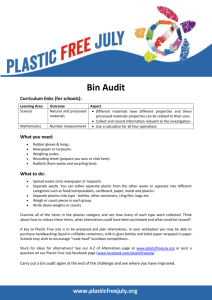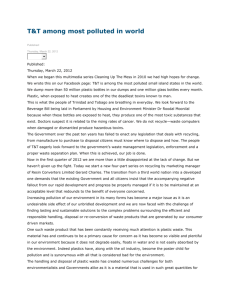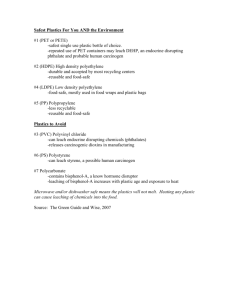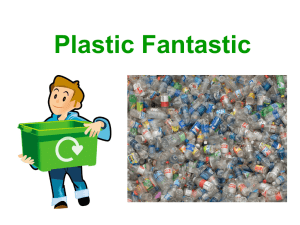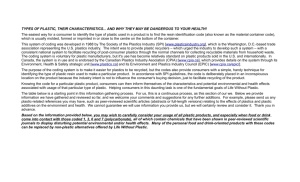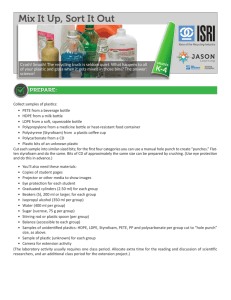plastics by number - David Suzuki Foundation
advertisement
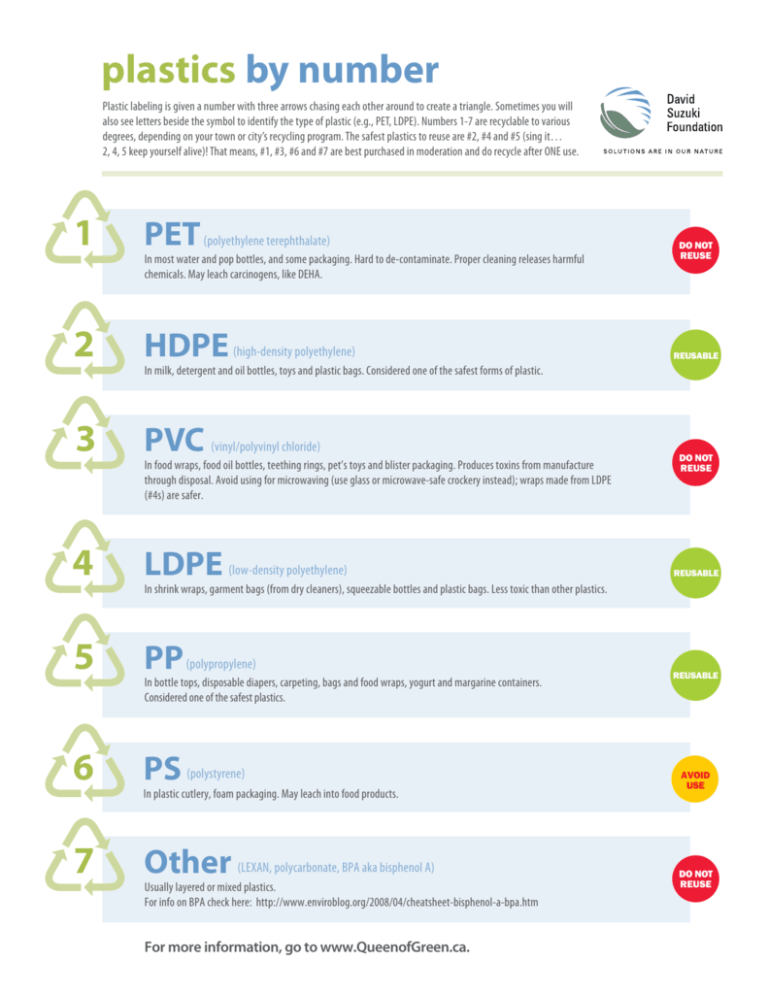
plastics by number Plastic labeling is given a number with three arrows chasing each other around to create a triangle. Sometimes you will also see letters beside the symbol to identify the type of plastic (e.g., PET, LDPE). Numbers 1-7 are recyclable to various degrees, depending on your town or city’s recycling program. The safest plastics to reuse are #2, #4 and #5 (sing it… 2, 4, 5 keep yourself alive)! That means, #1, #3, #6 and #7 are best purchased in moderation and do recycle after ONE use. 1 PET (polyethylene terephthalate) 2 HDPE (high-density polyethylene) 3 PVC (vinyl/polyvinyl chloride) 4 LDPE (low-density polyethylene) REUSABLE 5 PP (polypropylene) REUSABLE 6 PS (polystyrene) 7 Other (LEXAN, polycarbonate, BPA aka bisphenol A) In most water and pop bottles, and some packaging. Hard to de-contaminate. Proper cleaning releases harmful chemicals. May leach carcinogens, like DEHA. DO NOT REUSE REUSABLE In milk, detergent and oil bottles, toys and plastic bags. Considered one of the safest forms of plastic. In food wraps, food oil bottles, teething rings, pet’s toys and blister packaging. Produces toxins from manufacture through disposal. Avoid using for microwaving (use glass or microwave-safe crockery instead); wraps made from LDPE (#4s) are safer. DO NOT REUSE In shrink wraps, garment bags (from dry cleaners), squeezable bottles and plastic bags. Less toxic than other plastics. In bottle tops, disposable diapers, carpeting, bags and food wraps, yogurt and margarine containers. Considered one of the safest plastics. In plastic cutlery, foam packaging. May leach into food products. Usually layered or mixed plastics. For info on BPA check here: http://www.enviroblog.org/2008/04/cheatsheet-bisphenol-a-bpa.htm For more information, go to www.QueenofGreen.ca. AVOID USE DO NOT REUSE





